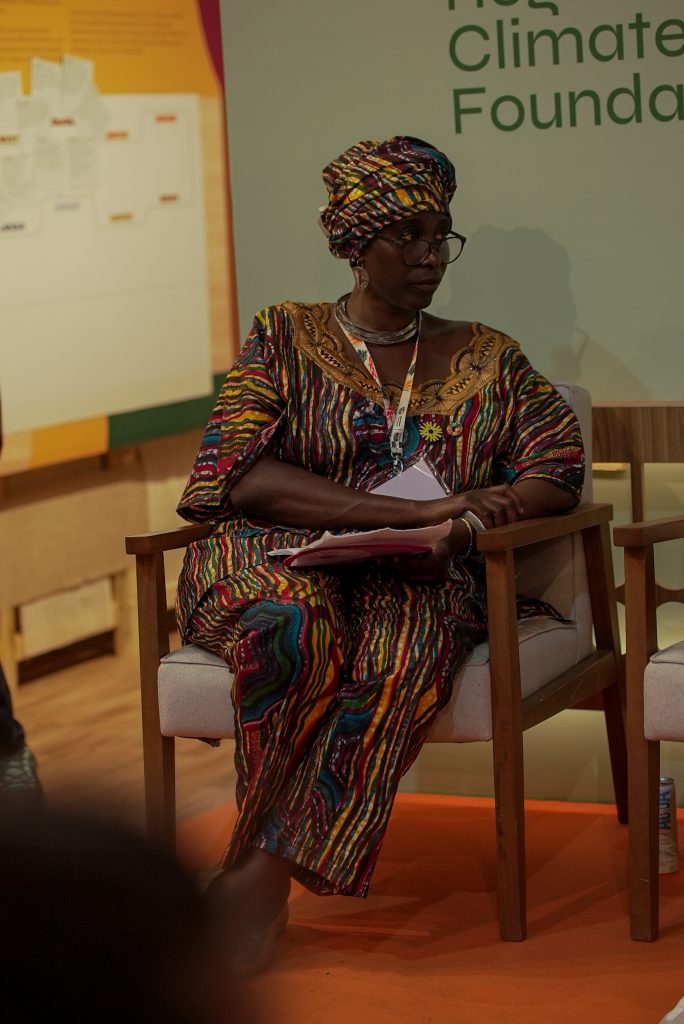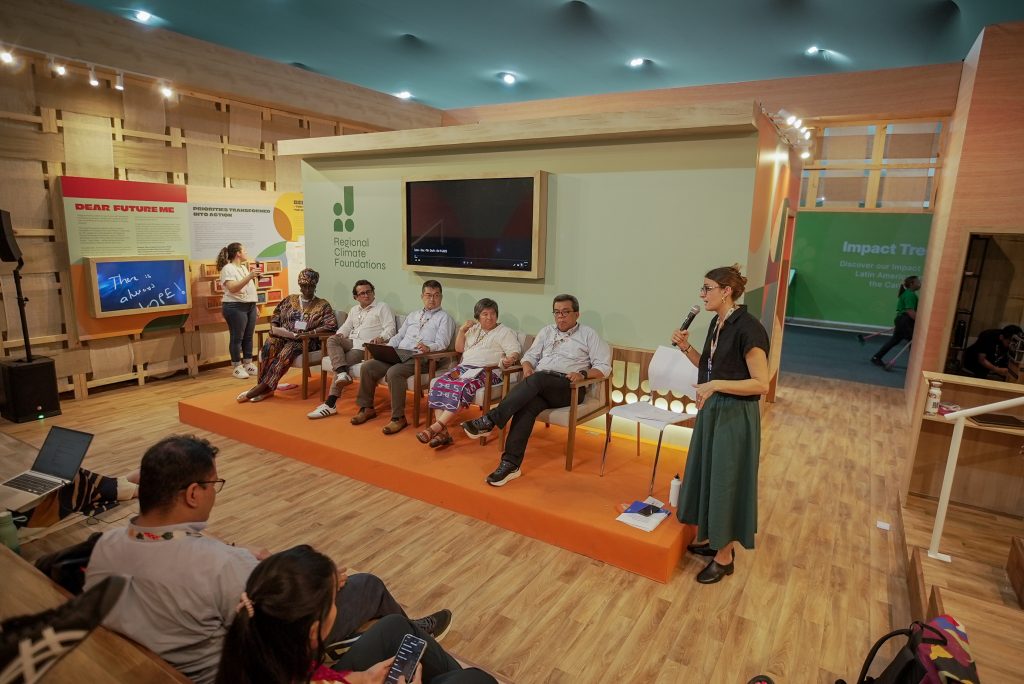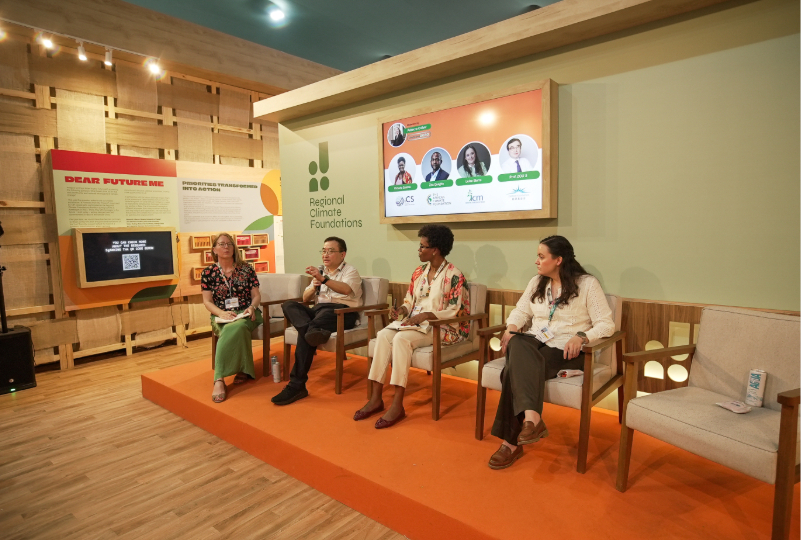Rural communities in Shanxi province, in China. Indigenous people in the middle of the Amazon forest. Fishermen in the peninsula of Baja California Sur, Mexico. Those are three examples of how climate action can help to contain the planet’s rising temperature at the same time that improves livelihood in small and vulnerable communities. The cases were mentioned during the panel “Community Power for Global Impact: Scaling Regional Power Transformations”, held this Friday morning, 14, at the Regional Climate Foundations pavilion at COP30.
“These are examples of inspiring projects that promote just transition”, celebrated the moderator of the panel, Rebecca Collyer, who is the executive director of ReNew2030, a global coalition that works on the clean energy process.
The participants shared experiences on the climate goal of tripling the renewable energy by 2030 — commitment made during COP28, in the UAE — by installing solar panels in small communities. But also the challenges of the distributed generation in remote locations.
The main achievement they see in the projects is the life quality the communities gained: “With stable energy, these people have more time and new dreams”, explained the manager of Energy Transition at the Institute for Climate and Society, Victoria Santos. “Women, for example, can now use washing machines”, added.
This perception was repeated by the other panelists, the Professor Ji Zou, CEO and President of Energy Foundation China, and the energy director of the Mexican Climate Initiative, Luisa Sierra.
In China, for example, microgrids are allowing rural communities to improve production and money income. “We are driving a people-centered development with solar panels. And, in the meanwhile, we save the climate, mitigating emission of greenhouse gases”, expressed Ji Zou.
In Mexico, the strategy of the Mexican Climate Initiative for ensuring clean energy for the more vulnerable communities includes dialogues with those villages, to gain their trust, as well as with the government, in order to develop a regulation framework that makes the projects sustainable in the long term. “We also are campaigning, advocating and offering technical assistance”, listed Sierra.
Sierra explained that many villages that are receiving clean energy projects live in areas where the temperatures can reach 40º or even 50º C — so cooling strategies are central to saving lives.
Greenest and cheaper
In Brazil, the solar panels are replacing diesel-powered generators. “This old source of electricity did not provide autonomy, and it is a very expensive power source”, explained Santos. So, by reducing energy costs, the projects are also increasing income to the communities. In many cases, they also allow the community to improve their revenues: fishermen, for example, can freeze their products and sell them at the most appropriate moment.
In China, where big distances can sometimes represent a high investment to reach them with expanding the regular grid, microgrids based on solar energy are also saving money. Besides that, in places with intensive coal use, solar panels are also positively impacting people’s health, as are improving air quality.
Indicators
The goal of generating social impact and economic development while using clean energy, however, suffers from one difficulty: the lack of indicators to track progress made.
For the head of secretariat at JETP Indonesia, Paul Butarbutar, a global indicator won’t solve the problem: “The concept of just transition has a different meaning for many countries, it is not a global same understanding”, introduced in the panel “Ensuring just energy transitions: using indicators for successful, fair and inclusive transitions”. “And there isn’t any reason for having it. I’m thinking if it is worthy to have a global indicator for that”, added.

But for three of the participants, there are important indicators to track progress — or, more than that, to make sure that the transition is really fair with all. The executive director of Indigenous Peoples’ Rights International, Joan Carling, for example, advocated for an indicator to assure respect to indigenous territories, rights and resources: “And also the obligation to consult the indigenous, and, most important, the respect for the right to say no”.
Eric Manzi, the Deputy Secretary General of the International Trade Union Confederation reminded that a just transition only exists if workers rights are respected. “Our mission is to protect jobs and families”, explained.
Finally, Sheila Oparaocha, a director at International Network on Gender and Sustainable Energy, reminded us of the need for gender responsive indicators: “the lack of access to energy and to just transition impacts disproportionately much more women”.


